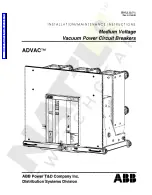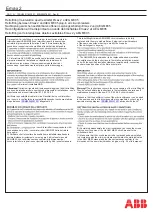
MA-037 - CB Watch 3 Operating Manual
v7.0 - May 2020
Page 101 of 118
Heater Temperature
Winter heating monitoring
When CB must operate in harsh winter conditions, making sure that the various drive
cabinets and control cabinets are adequately heated and maintained at the proper
temperature becomes key.
In the old days, heaters were permanently on and older monitoring systems relied on
monitoring the heater current to verify that the heating resistance was not open circuit and
that the heater was working. Nowadays, manufacturers are becoming more environment-
friendly and heaters are thermostatically controlled. This means that they are not always on
and measuring heater current no longer works or the logic becomes quite complicated to
avoid creating false alarms when the heater is simply off).
Instead of using an indirect measurement (heater current), the CBW3 prefers to monitor the
end result of keeping the correct cabinet temperature.
We are therefore interested in setting a minimum and maximum threshold for the
temperature in the cabinet. An alarm will be raised if:
•
Measured value > Maximum threshold
•
Measured value < Minimum threshold
HMI: Settings / Aux. temperatures
Figure 172
–
Thresholds for measured temperatures
The other temperature sensor inputs can also be used to monitor the proper operation of
SF
6
tank heaters if they are present.
Condensation prevention monitoring
In some countries with high humidity, condensation is the key issue and users are trying to
avoid condensation forming inside the cabinet on the electronics/electrical. The heaters are
there to ensure that the cabinet is always hotter than the outside ambient temperature.
We are therefore interested in setting a minimum and maximum threshold for the
temperature in the cabinet. An alarm will be raised if:
•
Measured value (inside)
–
Outside Ambient temp > Delta positive value
•
Measured value (inside)
–
Outside Ambient temp < Delta negative value
















































